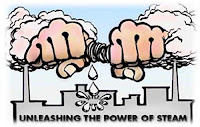Steam, usually created by a boiler burning coal or other fuels, became the primary source of energy for mechanical movement during the industrial revolution, ultimately being replaced by fossil fuels and electricity.
Steam has many commercial and industrial uses. In agricultural, steam is used to remediate and sterilize soil. In power generation, approximately 90% of our electricity is created using steam as the working fluid to spin turbines. Autoclaves use steam for sterilization in microbiology labs, research, and healthcare facilities. Many commercial and industrial pieces of equipment are cleaned with steam. Finally, commercial complexes, campuses and military buildings use steam for heat and humidification.
The following video, the second part of a three part series titled “What Steam Is, How Steam is Used, and the Properties of Steam” provides the viewer with an exceptional basis to build from. Special thanks to Armstrong International who created the original work.
For more information on any industrial or commercial steam application, contact:
Mead O'Brien, Inc.
(800) 892-2769






